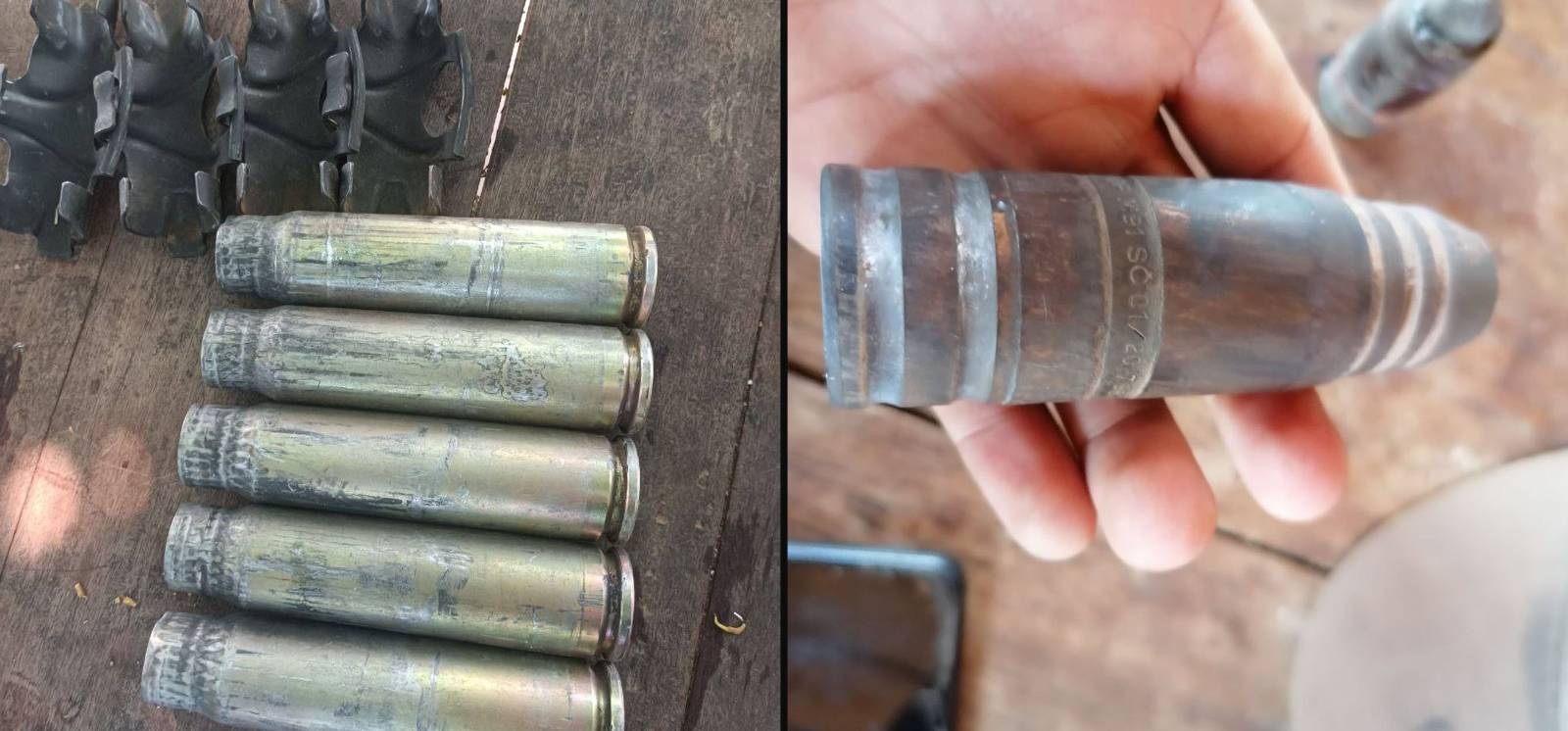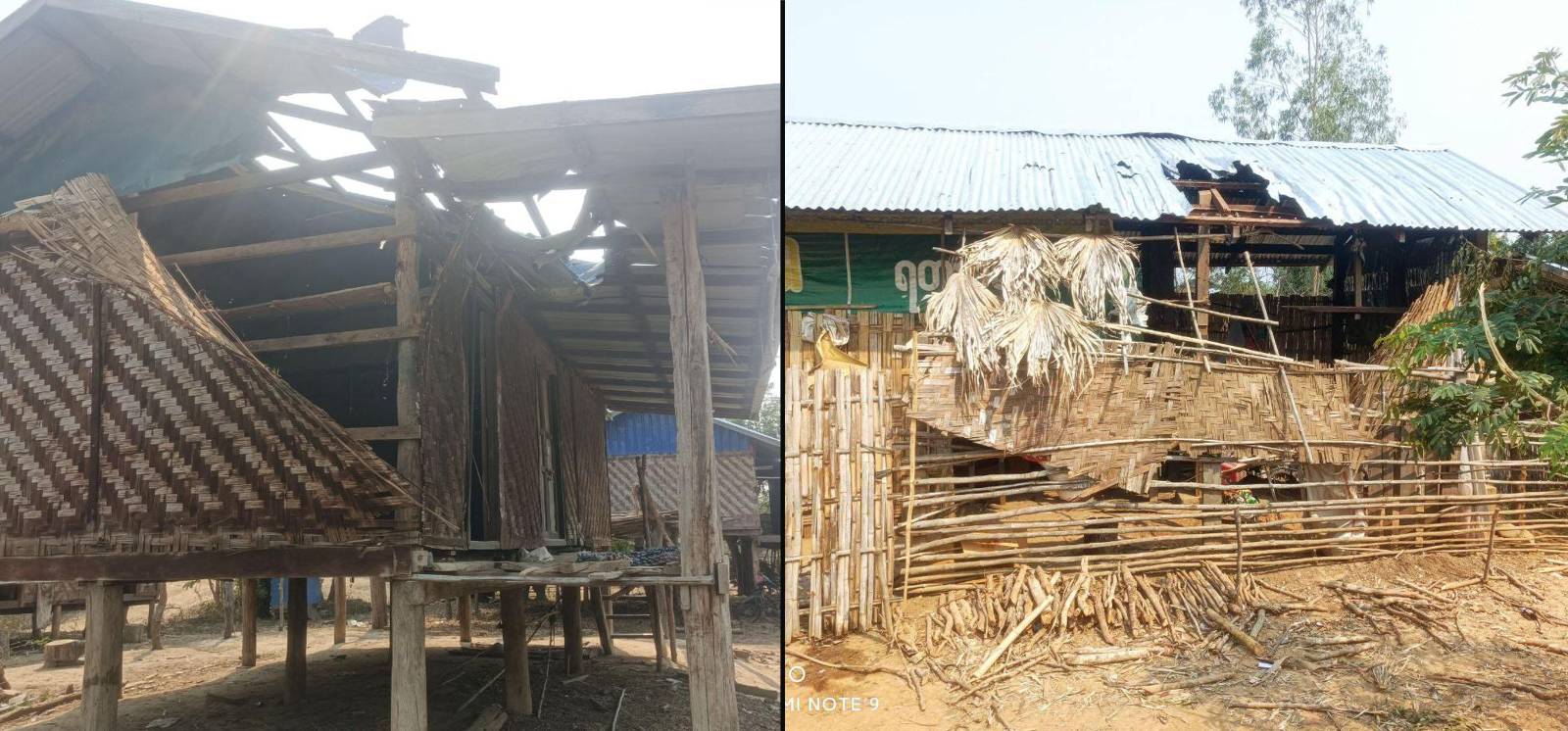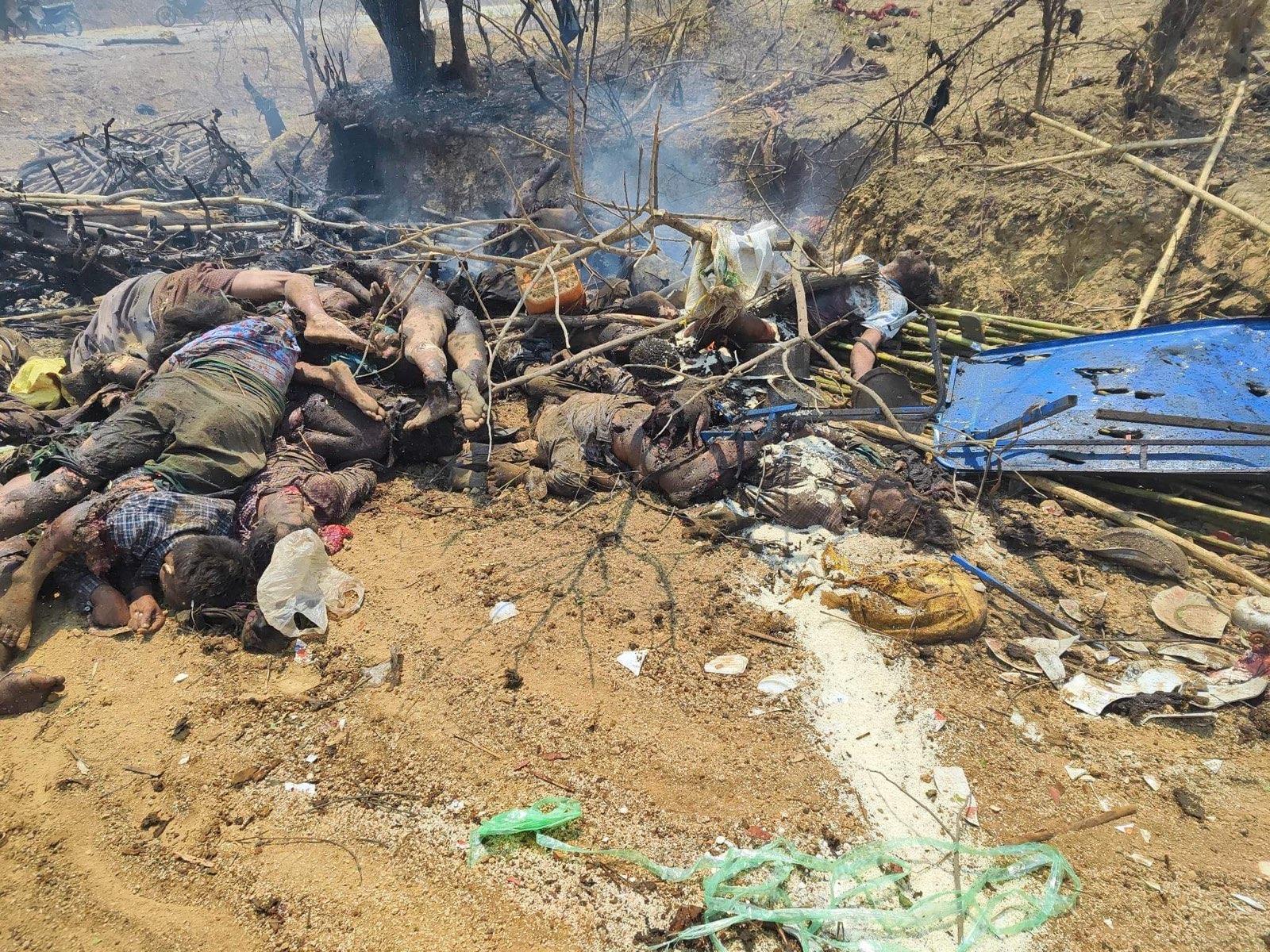An instant after he caught sight of the military jet fighter screaming overhead, U Win heard a massive blast, then saw black smoke rising from his village. The 57-year-old resident of Pazi Gyi Village in Kantbalu Township, Sagaing Region was over a kilometer away from the village feeding buffalos when he heard someone shout that “A fighter is coming!”

It was around 7 in the morning.
U Win immediately worried for his fellow villagers, because a housewarming ceremony was being held there and many people had gathered for it. He rushed back to the village on his motorbike, returning to scenes of horror.
“There were so many people whose feet and hands had been blown off by shrapnel, including little children. People were screaming,” U Win said, recalling the aftermath of the Myanmar military’s air strike on his village.
The site was strewn with pieces of human flesh and corpses charred beyond recognition. The April 11 air strike on Pazi Gyi killed more than 170 people, making it the deadliest since the military seized power in 2021.
At around 7 a.m. on that day a military jet fighter dropped two bombs on a house where around 200 civilians including residents of Pazi Gyi and nearby villages had gathered to attend the housewarming ceremony.
“One bomb landed in the middle of the pavilion where the villagers were enjoying a feast and the other landed beside the house,” U Win told The Irrawaddy.
Around 175 civilians—ranging in age from 6 months to 76 years, and including 42 children—were killed and 30 injured in the air strike. Three of U Win’s family members—his younger sister Daw Mya Zaw, 55, younger brother U Naing Min Tun, 50, and brother-in-law U San Phyo Oo, 50—were killed in the aerial massacre.
“After the attack, I only recognized the dead body of my sister. The corpses of my brother and brother-in-law were [too badly] charred,” U Win recalled.
Ten minutes after the bombs fell, as U Win and other villagers were collecting the pieces of flesh and charred bodies for burial, an Mi-35 combat helicopter arrived and sprayed the area with gunfire for 20 minutes. U Win said he survived by hiding under a small bridge.
“A lot of injured civilians were killed in the second attack,” he told The Irrawaddy.
In the evening, while locals continued the grim task of collecting the remains of the victims of the morning attack, a junta jet fighter arrived and conducted yet another air strike.
Pazi Gyi has more than 200 houses and over 1,000 residents, most of whom are engaged in agriculture. The locals said the military’s deliberate attack was unprovoked, as the village had not experienced any clashes between the military and local resistance forces.

The Myanmar military spokesman admitted the air strikes, claiming the attack targeted the opening ceremony of a public administration office by the civilian, anti-regime National Unity Government (NUG) and its armed wing the People’s Defense Force (PDF). The regime has branded the NUG and the PDF as terrorist organizations.
However, village residents rejected the junta’s accusation and said there were no PDF groups present in their village. They said they only had village defense members tasked with protecting residents’ properties and safeguarding the village.
Massacre from the air
The Myanmar military used two massive 500 pound bombs in the morning attack. The helicopter attack involved an S5 rocket and fire from a 30-mm machine gun, and 23-mm machine guns were used in the evening attack, according to the NUG.
Ko Min Min, an NUG ammunition expert, explained the destructive power of these weapons at a press conference on April 16. A 500 pound bomb, he said, has a “red area”—the area within which the explosion is strongest—of 50 meters in diameter. Any person or object in that zone will be blown to pieces, he said.
Such was the power of the bombs, according to U Min Thit, information officer of the NUG’s Emergency Response and Relief Committee, that there was simply nothing left of many of the victims.
“With the bodies so completely blown apart, some of them died in a way that made it impossible to tell if the remains were human,” U Min Thit said.
Thirty-millimeter machine guns are designed to destroy objects; when a human being is hit by this weapon, their limbs are blown off, he said.
“This is evident from looking at the remains on the ground,” Ko Min Min said at the press conference.
Children disappeared while eating
Children, women—some of them pregnant—and elderly people were among the massacre victims. In addition to Pazi Gyi villagers, residents of nearby Lay Twin Zin and Yoar Thar Year attended the housewarming ceremony; it is traditional in rural areas to invite everyone from surrounding villages to attend such events and serve them food.
Pazi Gyi resident Ma Zin Mar, 17, said the children went to the pavilion to eat rice early before they went to school.
She said that since the 2021 coup, such events providing free food had become rare in the village, so many children went there to eat.
“The military fighter jet dropped bombs while the villagers were eating,” she told The Irrawaddy.
Ma Zin Mar said she knew almost all of the child victims because she often played with them. She was especially close to victim Zin Thu Lin Lat, 6, saying she loved the child like a younger sister. Zin Thu Lin Lat would wear thanakha traditional cosmetic paste and flowers given to her by Zin Mar whenever there was a festival at the school.
“A couple of days before the attack, she came to me and gave me flowers. That was the last time for us,” Zin Mar said in a soft voice.
She remembered how cute the youngest victim, just 6 months old, was, though she was still too young to speak. She said she grieved for the children, some of whom simply vanished in the attack, others identified only through body parts.
“I am so angry at the military. I want to take revenge in whatever way I can,” Zin Mar told The Irrawaddy.
Living in fear

In the aftermath of the massacre, nearly 10,000 civilians from Pazi Gyi and 10 nearby villages have been forced to flee their homes. Meanwhile, military jet fighters, helicopters and scout drones have been flying over Pazi Gyi every day, constantly retraumatizing the displaced villagers, according to Pyae Phyo, a volunteer helping residents of Pazi Gyi village.
“They [the villagers] cry whenever they meet us,” Pyae Phyo told The Irrawaddy.
Forced to take shelter in the forest, the villagers have not been able to conduct funeral rituals for their slain relatives. Some villagers have even resorted to participating in rituals with monks via mobile phones.
“Give the situation, the monks haven’t been able to come to see the villagers. And the villagers have not been able to gather, as they are afraid of the military jets,” Pyae Phyo explained.
A week after the air raids, around 200 regime ground troops raided Pazi Gyi and stationed themselves at the village monastery, forcing the terrified villagers to find new hiding spots further away.
U Win, who lost three family members in the attacks, said he has run as far from the village as he can and has not heard any updates following the attacks. All he could say was that he prays that others will be spared his fate.
“I don’t want to see such a tragedy ever again.”
Some names in this story have been changed for security reasons.

















